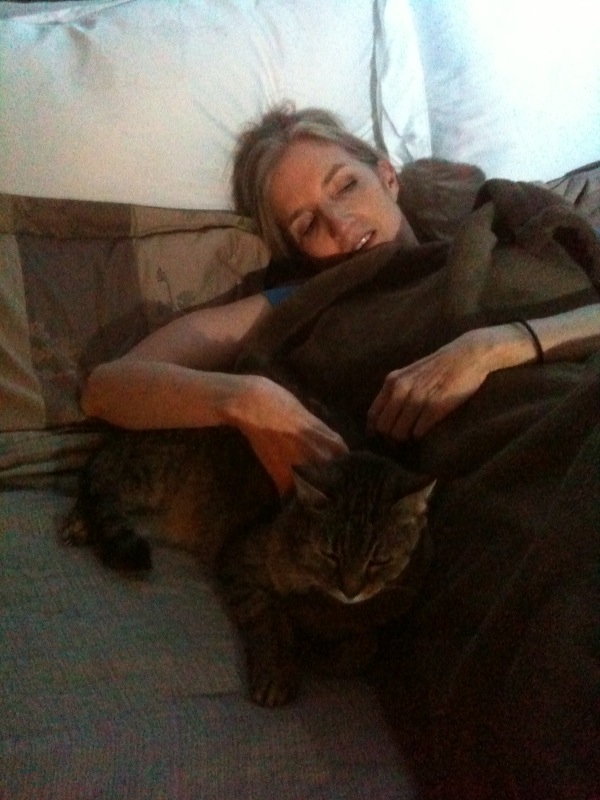Nightbirds in Central Park
by Luanne Rice
When I was young and under the complete command of my heart, I moved to New York. I was searching for art and artists and writers and a place that could accommodate my life’s intensity and call it “creativity.”
My friend Brendan Gill, drama critic at The New Yorker, gave me several invaluable instructions. One was, “Writers always think they have to drink a lot and be miserable, but don’t,” and another was, “Go to Central Park.” He told me that as Connecticut natives we required a lot of nature to balance urban thrills, and over the years I have discovered that he was completely right.
Although I love Poets’ Walk, the Bandshell, Cleopatra’s Needle, and the allées of crabapple trees in Conservatory Garden, my favorite places in Central Park are the most wild—the Ramble and the North Woods. The park is situated along the Atlantic Flyway, a migration corridor traveled by birds that fly at night, navigating by the stars, landing at sunrise in the greenest spots they see. Central Park is a great oasis for birds.
Last weekend was the Bio-Blitz, a twenty-four biological survey of the park. Organized by the Explorer’s Club, it attracted many nature-lovers to participate. In all, they counted 838 species. I had planned to join the Friday night moth-counting contingent, but during peak hours I found myself engaged in a different exploration: walking across the Brooklyn Bridge with two friends from Hartford, one of them thirteen, on a search for the Brooklyn roots of the rapper Jay-Z.
But I visit the park frequently and have remembrances of observations past… During the Christmas Bird Count on December 19th, 2004, the word went out that a Boreal Owl, rare for these parts, had been spotted in a tall pine behind Tavern on the Green. I headed over, and stood with Cal Vornberger as he photographed the shy, beautiful bird. Another favorite time was the night I went owling. In March, 2002, my friend E.J. McAdams, then an Urban Park Ranger, invited me to join an expedition to track screech owls. We met at the Boathouse, and our party consisted of several avid birders, including Charles, Lee, and Noreen, famous to people who know the story of Pale Male, the red-tailed hawk who for ten years has courted, hunted, nested, and raised seventeen chicks atop the penthouse next to Woody Allen’s.
At night the city is enchanted. It just is. You stand at the edge of the park and look around at all the buildings twinkling with lights—the Plaza, the Dakota, the San Remo, the Beresford, the limestone palaces on Fifth Avenue—and New York City is a magical landscape of wit and glamour, and there’s an orchestra of taxi horns and boom boxes, and at any second someone wonderful will come along and ask you to dance. Just outside the park, New York City is still a place of human dreams.
But walk inside the park’s perimeter, and suddenly you are solidly with nature—the place Brendan warned me that I must find. After sunset, Central Park is the wilderness, vast and dark. That March night was chilly. E.J. told us that to find owls at night, we had to look for unexpected shapes in the bare trees. We tried to walk silently, like trackers, scanning branches overhead with an unfocussed gaze.
We made our way around the Lake, and our first sighting was just south of Bow Bridge. As promised, the screech owl looked “unexpected”: an out-of-place smudge in a graceful network of maple branches. We stood still, watching for a long time, until she flew. And then we followed her into the Ramble.
A screech owl’s call is the opposite of its name, mysterious and descending, like a backwards horse whinny. We tracked that owl till we lost her, and then we looked and listened for others. During that whole night, our group rarely spoke. We each had our own reasons for being there, in the wilds of Central Park on a cold not-yet-spring night, and I know that I was lost in a combination of meditation, awe, and gratitude for my Connecticut-born connection with nature.
On Cedar Hill, in the east-seventies, there is a stand of red cedar trees where in recent years four Long-ear owls have roosted. Like other owls, they sleep by day and hunt by night. By staking out the trees at dusk, it is possible, with patience, to observe the “fly out.” I witnessed it once; E.J. pointed out how each of the four owls left the trees in a completely idiosyncratic way. One hopped to the end of a branch, then flapped toward the Metropolitan Museum of Art. Another zoomed straight up, like the Concorde. One hulked like a gargoyle, seeming to indict everyone and everything on the ground, and then flew menacingly into the night. The last waited a long time, as if deciding whether to actually go or not, and then looped west, toward Belvedere Castle.
It is a great thrill and honor to observe the fly-out; only one person I have ever heard of has ever seen the fly-in, and I was with her on the Night of the Screech Owls. Noreen. Tall and stately, she has a cascade of bright white hair and eyes that are steady and compassionate. One New Year’s Eve, it is said, after watching the Cedar Hill fly-out, she decided to stick around the park till just before dawn and wait for the owls to come home.
That’s a much more difficult proposition, because they don’t return all at the same time, and they arrive from different directions, and the sun hasn’t yet risen over the East Side, and the owls fly in so fast you’re not quite sure you’ve seen them. But according to park legend, Noreen did—that New Year’s Day, she saw the fly-in.
Although I walked beside her that March night, I didn’t ask her about the story. Our screech owl-seeking group progressed north in silence, over the Seventy-Ninth Street Transverse and past Shakespeare Garden, into more relatively tame park regions as we made for the North Woods—the dense woodlands and steep bluffs in the northernmost reaches of the park.
But we never got that far. We spotted an owl along Central Park West. Just across the busy street, the exhibit “Baseball as America” was opening on at the American Museum of Natural History. The great columned entrance was stunningly illuminated red, white and blue as limousines discharged various Yankees, Mets, and other baseball and museum lovers.
There, bathed in the museum’s patriotic glow, was a screech owl perched on a low branch. To get the best view, we had to actually exit the park and stand on the sidewalk at West 81st Street. People were clustered, watching for Derek Jeter and Bernie Williams and Joe Torres, who were rumored to be attending the opening. We had to edge through the throng, to get closer to the owl. Two crowds of people standing in the same spot, facing in opposite directions.
The owl was oblivious. He was gray and white, eight inches tall, so close I could look into his ferocious yellow eyes. In true New York fashion, he let everyone else go about their business while he went about his: killing a mouse. Wings spread, he slashed downward, hit his prey as it ran, and ripped it apart—gobbling bloody entrails made redder by the gala museum lights.
Most of the bystanders missed seeing that murderous show. They forgot to glance over the wall into the wilds of Central Park, fixed as they were on the American pastime, on the enchantment of Manhattan, on their own human dreams.
I have my own human dreams. I have made many of them come true in New York City. But part of me is still a Connecticut girl at heart, and Brendan’s words are never too far from my consciousness: “Go to Central Park.” Oracle, sage: thank you for knowing me, for reminding me of who I am. Nature is in my nature.
Besides, I still have to see the fly-in.
(Photograph by Cal Vornberger: Two fledgling Eastern screech owls, Central Park, North Woods. www.calvorn.com)








